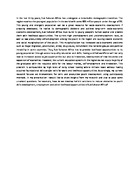| dc.contributor.author | Tukundane, Cuthbert | |
| dc.date.accessioned | 2017-02-20T07:09:19Z | |
| dc.date.available | 2017-02-20T07:09:19Z | |
| dc.date.issued | 2015 | |
| dc.identifier.uri | http://hdl.handle.net/20.500.12280/404 | |
| dc.description.abstract | In the last thirty years, Sub Saharan Africa has undergone a remarkable demographic transition. The region now has the youngest population in the world with some 600 million people under the age of 25. This young and energetic population can be a great resource for socio-economic development if properly developed. To realise its demographic dividend and achieve long-term socio-economic economic development, Sub Saharan Africa must build its young people’s human capital and provide them with livelihood opportunities. The current high unemployment and underemployment rates, as well as low productivity self-employment among the youth in the region are causing severe economic and social marginalisation of the youth. This marginalisation has increased socio-economic problems such as illegal migration, prostitution, crime, drug abuse, recruitment into terrorist groups and political instability in some countries. Thus, Sub Saharan Africa has to provide livelihood opportunities to its young population through access to quality education and skills. Having a skilled workforce will not only lead to increased access to job opportunities but also to innovation, development of new industries and expansion of economies. However, the current education systems in the region do not equip majority of the graduates with the requisite skills for the labour market, self-employment and innovation. This problem is compounded by high rates of early school leaving where millions leave without having acquired foundational skills and/or skills for work and livelihood opportunities. Accordingly, my current research focuses on interventions for skills and productive youth development using participatory methods. In my presentation I would like to share insights from my research and also to pose some unsolved questions. For example, how do we develop holistic solutions to reduce obstacles to youth skills development, employment and other livelihood opportunities in Sub Saharan Africa? | en_US |
| dc.language.iso | en | en_US |
| dc.subject | Socio-economic development | en_US |
| dc.subject | Demographic dividend | en_US |
| dc.subject | Stagnation, Growth, Divergence and Crises | en_US |
| dc.title | Long-term socio-economic development through harnessing the demographic dividend:. | en_US |
| dc.title.alternative | prospects and challenges for Sub-Saharan Africa | en_US |
| dc.title.alternative | A paper presented at Herrenhausen Conference on Long-term Processes of Socio- Economic Development: Stagnation, Growth, Divergence and Crises | en_US |
| dc.type | Other | en_US |


